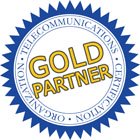Study Guide Notes For This Lesson
These are the words that are displayed and spoken during the lesson. Get these notes for the whole course in the Certification Study Guide, available in print or eBook. Many people tell us a printed companion book enhances their learning!
If a tree falls in the forest and no-one is there to hear it, does it cause a sound? The answer depends on whether you believe sound is sound pressure waves – air molecules getting closer together then further apart; or if you believe sound is the sensation one gets in one's brain when one hears the sound pressure waves. Then, two points of view when designing the telephone system would be:
- At the receiver, reproduce the sound pressure waves exactly the same as they are at the transmitter, or
- Reproduce the sensations in the listener's brain just as if they had been speaking directly to the talker.
The difference between these two ideas is that the brain is a hugely complicated processing instrument, and we can play different stimuli at it and get the same response.
What choice did Alexander Graham Bell make?
Answer #2.
Based on testing human beings' ears, throats and brains, and some technical limitations, A. G. Bell decided to transmit all of the information in the frequency range between about 300 and 3300 Hz.
Hertz (Hz) is the unit for frequency, or changes per second.
This range or band of frequencies is called the voiceband.
The image is a representation of the voiceband, with frequency on the horizontal axis and amplitude or intensity on the vertical axis.
A simplified version of the image (contained within the lesson) shows any electricity vibrating at least 300 times per second and less often than 3300 times per second will be passed.
Any electricity vibrating less often than 300 times per second will be suppressed.
Similarly, any electricity vibrating more than 3300 times per second will be suppressed.
Only electricity vibrating within the band 300-3300 Hz will be transmitted.
The suppression of energy outside this frequency band 300-3300 Hz is implemented with simple electrical circuits called filters. There is a filter in the telephone and a filter in the switch in the CO.
For our purposes, the term bandwidth means capacity.
In the analog world, capacity is measured literally by the width of the available frequency band.
In this case, the width of this frequency band is 3300 – 300 = 3000 Hz, or 3 kHz for short.
This 3 kHz bandwidth is the capacity provided for ordinary telephone service.
Why does the voiceband stop at 3300 Hz?
The two wires that make up the loop are capable of supporting electricity vibrating more often than 3300 times per second – in fact, DSL technologies require electricity vibrating at frequencies measured in the millions of times per second.
The users' ears and brains are capable of detecting sound pressure waves vibrating more often than 3300 times per second – the human hearing range is traditionally thought to extend up to 20,000 Hz.
So why would the capacity a user is allowed to employ purposely limited to 3 kHz, even though the wires are capable of more than that, and the users are capable of more than that?
The answer is, as usual, money.
The more capacity a user is allowed to employ on the access circuit, the loop, the more capacity and hence money required to transmit the information across distance.
This narrow voiceband frequency range was chosen based on studying people's ears, throats and brains, to determine the minimum capacity necessary to meet the requirements.
Returning to the question of trees falling in the forest: the sound pressure waves at the far end are not reproduced exactly as they were at the near end; in fact, they are quite muffled and distorted, missing most of the higher frequencies.
The sound is reproduced just well enough so that the listener can recognize the speaker and understand what the speaker is saying, thus meeting the requirement to communicate information using speech and hearing.
We are interested in transmitting the minimum required to meet that objective since there is a direct relationship between the capacity a user can employ on the access circuit and the cost of transmitting the information long-distance.














 Voiceband Filter
Voiceband Filter
 Alternate Phonetic Alphabet: "A as in ARE"...
Alternate Phonetic Alphabet: "A as in ARE"...